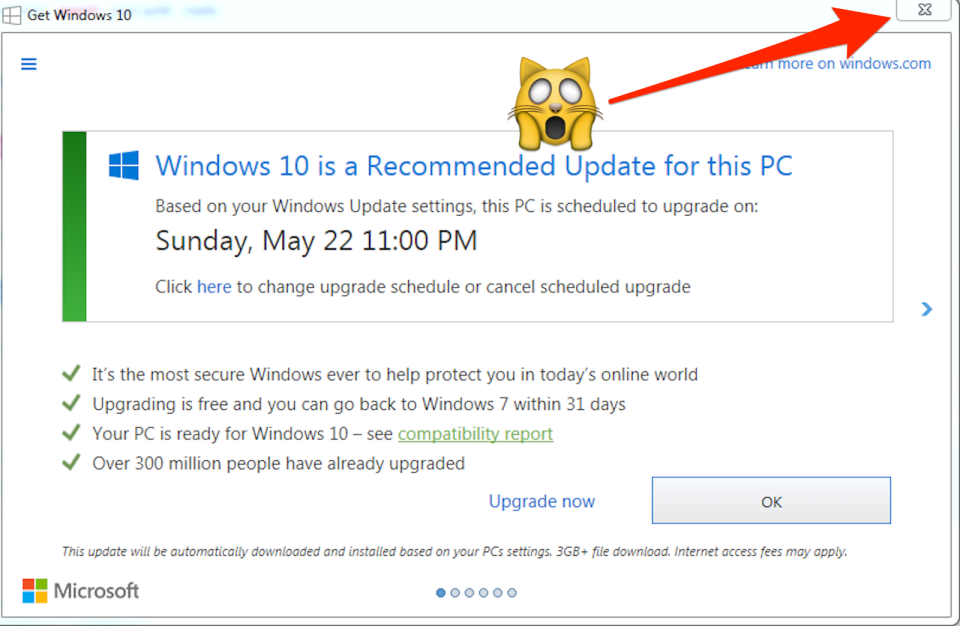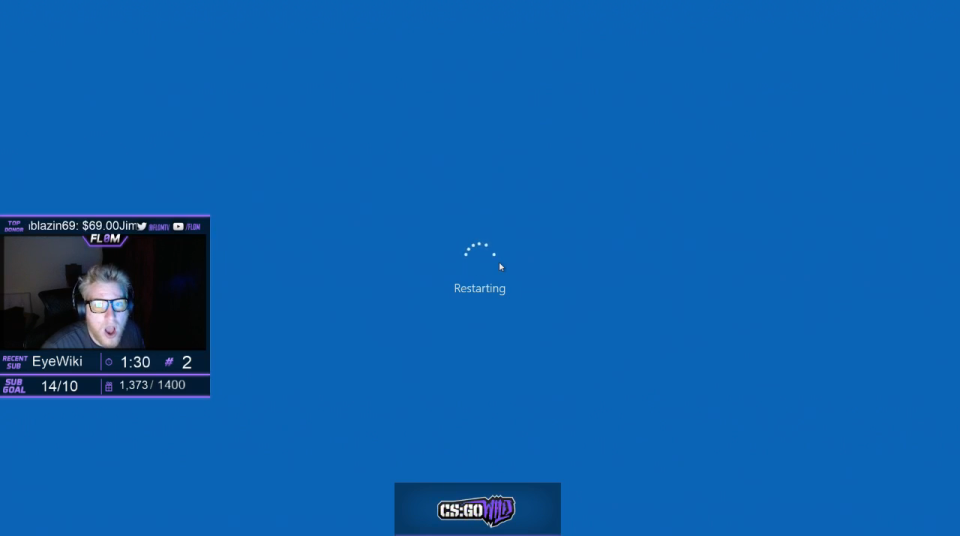Microsoft is using 'malware tactics' to trick people into upgrading to Windows 10 (MSFT)

LumpymayoBNI
Microsoft really wants you to upgrade to Windows 10.
The American tech giant has been aggressive pushing updates to its desktop operating system onto its users — and drawn significant criticism for the techniques employed.
The latest: Automatically upgrading users if they click X to close a pop-up about the update.
The new tactic was spotted by Brad Chacos over at PC World. For months, GWX (Get Windows X), the app responsible for all the Windows 10 update prompts, has been pushing updates onto users, to which the only way to opt-out was to press the X in the top-right corner to close the app (just like you do any other app).
But now GWX has changed its behaviour, and will take you pressing the X as a signal that you're happy to carry out the update at a time it provides. Instead, you have to manually change or remove the update time if you want to opt-out.
So if you're used to clicking X to get rid of the pop-up because you really don't want to (or can't, for software compatibility reasons) upgrade, then you might find yourself upgrading all of a sudden anyway.
There are reports on social media that users are being tricked into upgrading this way — much to their annoyance.
Tweet Embed:
https://twitter.com/mims/statuses/734480106840719361
@MakingTrevenue @BradChacos yep, I see this very often in my repair work. Shame on you @Microsoft
Tweet Embed:
https://twitter.com/mims/statuses/734520888922628096
@pcworld @BradChacos Of the ~10 offices i work at, 4 PCs upgraded last wk. We use w7, so had to roll them bk to 7. Old PCs, ~2.5hrs ea
Technology journalist Adam Turner, writing for the Sydney Morning Herald, even accuses Microsoft of using virus-style methods to trick users. "Its tactics come straight from the malware playbook, using deceptive pop-ups to trick people into installing software they clearly don't want," he wrote. "If any other business did this to you you'd walk away in disgust, but Microsoft knows it can treat people with contempt and generally get away with it."
Here's how one of the previous pop-ups — that forced you to press X to block the installation — looked.
Tweet Embed:
https://twitter.com/mims/statuses/675122217940860928
On a Windows 8.1 PC. Mostly full screen pop-up. No clear "No thanks" button, just download Windows 10 now or later. pic.twitter.com/RRoaFMST9r
The Windows 10 pop-ups have proved highly disruptive. In April, one interrupted a weather report on Iowa television station KCCI 8.
Youtube Embed:
http://www.youtube.com/embed/VMPeTrHNX1U
Width: 560px
Height: 315px
And the updates themselves have also started at awkward times — including one that interrupted a game that pro gamer Erik Flom was streaming to his followers on Twitch.

LumpymayoBNI
But despite the uproar, don't expect Microsoft to suddenly stop its upgrade strategy. The company is aiming to get Windows 10 onto one billion devices, and it clearly sees aggressive upgrades as one way to help achieve this — especially given the serious downturn in its mobile business.
A Microsoft spokesperson provided a statement indicating they think everything is working as intended:
As we shared in October, Microsoft has been helping customers who received the Windows 10 upgrade as an ‘Optional’ (and now ‘Recommended’) update, to schedule their upgrade. Once a customer’s upgrade is scheduled, they will receive a notification that states the time their upgrade is scheduled for, with options to reschedule or cancel if they wish. Based on customer feedback, we’ve also added another notification that confirms the time of the scheduled upgrade and provides the customer an additional opportunity for cancelling or rescheduling the upgrade. If the customer wishes to continue with their upgrade at the designated time, they can click ‘OK’ or close the notifications with no further action needed.
If you're determined not to update — and you can avoid Microsoft's increasingly sneaky attempts to make you — then there's still hope: After July 29, Microsoft says it will stop prompting users to upgrade.
NOW WATCH: Hidden Facebook tricks you need to know
See Also:

 Yahoo Finance
Yahoo Finance 
